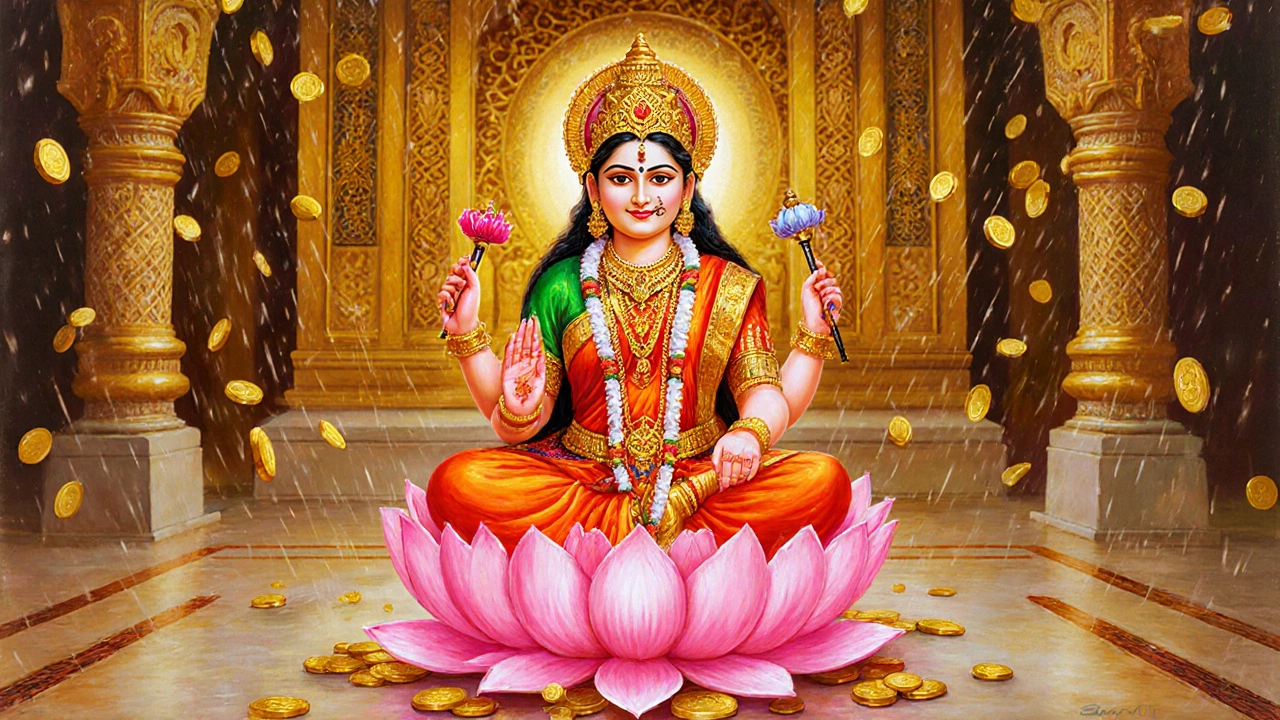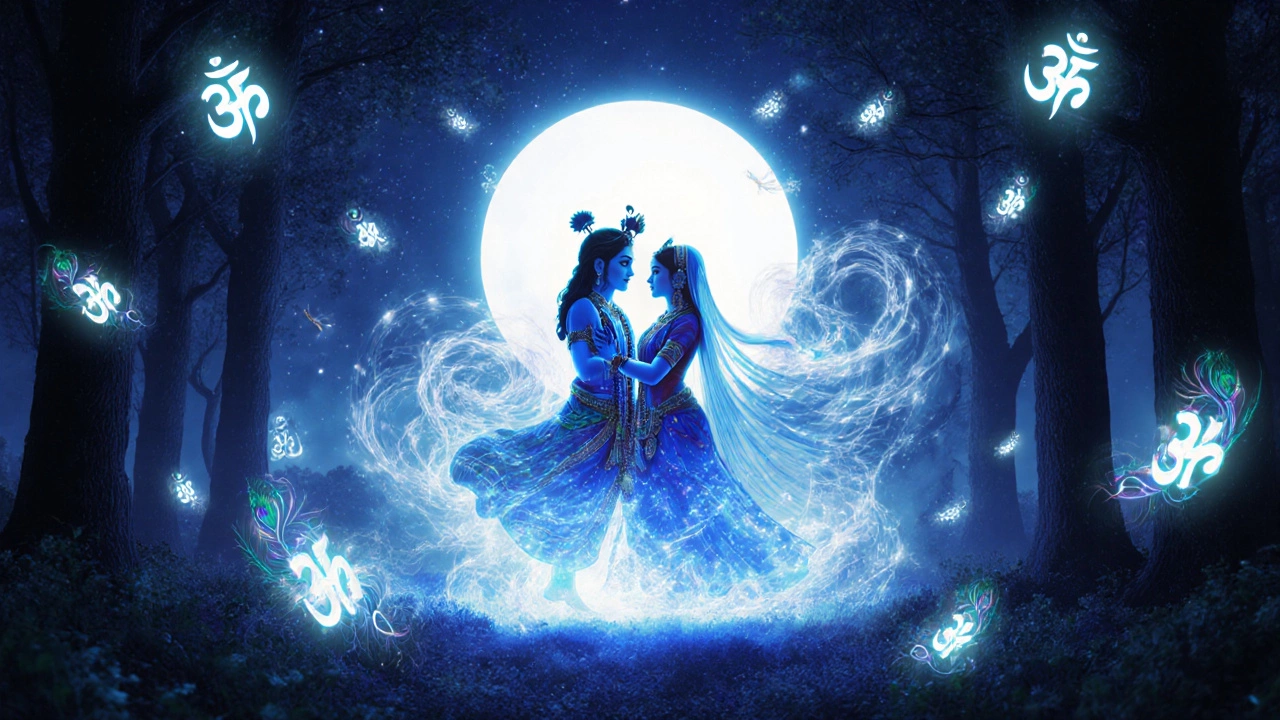Mythology Comparison Quiz
How Well Do You Know Hindu vs. Greek Mythology?
Test your understanding of the differences between Aphrodite and Hindu goddesses of love and beauty. Each question has one correct answer based on the article content.
Question 1: Why is Aphrodite not found in Hindu mythology?
Question 2: Which Hindu goddess is primarily associated with prosperity and abundance?
Question 3: What is the key difference between Aphrodite and Hindu goddesses of love?
Question 4: What is the purpose of Radha's love for Krishna in Hinduism?
Question 5: Which of these statements about the misconception that Lakshmi is equivalent to Aphrodite is true?
There is no Aphrodite in Hinduism. Not because she was forgotten, or lost in translation, but because she never existed there to begin with. Aphrodite is a Greek goddess-born from sea foam, worshipped in ancient temples on Cyprus and Corinth, and tied to Roman Venus. She belongs to a completely different mythological system, one shaped by Mediterranean culture, not the rivers and forests of ancient India.
Why Do People Think Aphrodite Is in Hinduism?
The confusion usually starts when someone reads that Lakshmi, Parvati, or Radha are goddesses of love and beauty. Then they hear about Aphrodite and assume the two must be the same. It’s an easy mistake. Both are female deities linked to desire, fertility, and physical allure. But linking them directly is like saying the American eagle and the Indian peacock are the same bird because both are symbols of national pride.
People often look for parallels across cultures. It’s natural. We want to make sense of the unfamiliar by comparing it to what we know. But mythology doesn’t work that way. Hindu gods and goddesses aren’t translations of Greek ones-they’re unique expressions of spiritual, social, and cosmic ideas rooted in Indian philosophy.
Who Is Aphrodite, Really?
Aphrodite, in Greek myth, was the goddess of sexual desire, romantic love, and physical beauty. She was born from the sea after Cronus castrated Uranus and threw his genitals into the ocean. Her symbols include doves, roses, myrtle, and the scallop shell. She had affairs with gods and mortals alike-Ares, Adonis, Anchises-and even caused wars, like the Trojan War, over who was the most beautiful.
In Roman culture, she became Venus, and her worship spread across the empire. She wasn’t just about romance-she was tied to fertility in agriculture and even to military victory. Her power was raw, unpredictable, and often dangerous. She didn’t represent harmony. She represented chaos in human desire.
Who Are the Hindu Goddesses of Love and Beauty?
Hinduism has no single goddess who mirrors Aphrodite’s exact role. Instead, love, beauty, and desire are distributed across multiple deities, each with deeper spiritual meanings.
Lakshmi is the goddess of wealth, prosperity, and abundance. She’s often shown seated on a lotus, holding gold coins. While she’s beautiful and graceful, her beauty isn’t about seduction-it’s about purity and divine grace. She’s the wife of Vishnu, the preserver, and her presence means order, not chaos. Her love is the love of sustenance, not passion.
Parvati is the goddess of devotion, power, and marital harmony. She’s the gentle counterpart to Shiva’s asceticism. Her love story with Shiva is one of patience, sacrifice, and spiritual union. She didn’t seduce him-she meditated for years to win him. Her beauty is tied to inner strength, not physical allure.
Radha is the eternal lover of Krishna. In Bhakti traditions, her love is the highest form of devotion. She doesn’t desire Krishna for herself-she desires union with the divine. Her love is not erotic in the Greek sense. It’s transcendental. Poets like Jayadeva and Mirabai wrote about her as the soul longing for God, not as a woman chasing romance.
Saraswati, while not a goddess of love, is the embodiment of beauty in knowledge, art, and music. She plays the veena and wears white, symbolizing purity of thought. Her beauty is intellectual and creative-not sensual.

What’s the Difference Between Aphrodite and Hindu Goddesses?
The key difference is in purpose. Aphrodite’s power comes from stirring desire-often leading to conflict, jealousy, and destruction. Hindu goddesses channel desire into higher goals: spiritual growth, cosmic balance, or selfless devotion.
Aphrodite is a force of nature-wild, untamed, and sometimes cruel. Hindu goddesses are manifestations of divine energy (shakti) that guide, protect, and transform. They don’t just inspire love-they teach how to rise above it.
Take the story of Kamadeva, the Hindu god of desire. He once shot an arrow at Shiva to make him fall in love with Parvati. Shiva, in his meditative state, opened his third eye and burned Kamadeva to ashes. That’s not a tale of romantic triumph-it’s a warning. Desire, without discipline, leads to destruction.
Compare that to Aphrodite’s myths, where desire is the driving force-sometimes celebrated, sometimes punished, but always central. In Hinduism, desire is something to be understood, mastered, and ultimately transcended.
Why This Misconception Persists
Colonial-era scholars in the 1800s often tried to map Indian religions onto Greek and Roman frameworks. They called Kali “a version of Hecate,” Ganesha “like Mercury,” and Lakshmi “the Indian Aphrodite.” These comparisons weren’t based on deep understanding-they were shortcuts for Western audiences who didn’t want to learn new names or ideas.
Even today, pop culture and social media simplify complex myths. TikTok videos say things like “Hindu goddess of love = Aphrodite.” These posts spread fast because they’re easy. But they erase the richness of Hindu theology.
There’s also a tendency to romanticize Eastern spirituality as “mystical” and “erotic.” That’s a stereotype. Hindu goddesses aren’t exoticized love symbols-they’re profound spiritual forces with complex roles in cosmology, ethics, and daily worship.

What Should You Call the Hindu Goddess of Love?
If you’re looking for a Hindu counterpart to Aphrodite, there isn’t one. But if you want to understand how love is viewed in Hinduism, look at the stories of Radha and Krishna, or the devotion of Parvati. These aren’t love stories in the Western sense-they’re spiritual journeys.
Love in Hinduism isn’t just emotion. It’s bhakti-devotion. It’s prema-selfless affection. It’s anuraga-deep, unwavering attachment to the divine.
There’s no single goddess who embodies all of that. That’s the point. Hinduism doesn’t reduce love to one symbol. It weaves it into the fabric of the entire spiritual path.
Final Thought: Don’t Force Equivalents
Mythologies aren’t dictionaries. You can’t look up “love” and find the same word in every language. Each culture expresses its truths in its own way.
Aphrodite’s beauty is dangerous. Lakshmi’s beauty is sacred. Parvati’s love is discipline. Radha’s love is surrender. These aren’t versions of the same thing-they’re different paths to understanding the human soul.
Instead of asking, “Who is Aphrodite in Hinduism?” ask: “How does Hinduism view love, desire, and beauty?” That question opens a much richer world-one that doesn’t need Greek names to make sense.
Is there a Hindu goddess equivalent to Aphrodite?
No, there is no direct equivalent. Aphrodite is a Greek goddess of sexual desire and physical beauty, often linked to chaos and conflict. Hinduism has multiple goddesses associated with love, beauty, and devotion-like Lakshmi, Parvati, and Radha-but none mirror Aphrodite’s role. Their beauty and love are tied to spiritual growth, not seduction or disorder.
Why do people confuse Lakshmi with Aphrodite?
People confuse them because both are beautiful goddesses associated with fertility and attraction. But Lakshmi’s beauty represents divine grace, prosperity, and purity. She’s not about romantic passion-she’s about abundance and order. Her connection to Vishnu ties her to cosmic balance, not desire-driven chaos like Aphrodite’s myths.
Did ancient Indians know about Greek mythology?
Yes, after Alexander the Great’s invasion in 326 BCE, there was cultural exchange between Greek and Indian kingdoms, especially in Gandhara (modern-day Pakistan and Afghanistan). Some Greco-Buddhist art shows Greek-style gods alongside Indian ones. But this didn’t lead to Aphrodite being adopted into Hindu worship. The two systems remained separate in theology and practice.
Is Radha the Hindu Aphrodite?
No. Radha’s love for Krishna is not romantic in the earthly sense. In Bhakti traditions, she represents the soul’s longing for God. Her devotion is selfless, spiritual, and transcendent. Aphrodite’s love is about possession, attraction, and physical union. Radha’s love is about surrender and unity with the divine-two completely different concepts.
Can Hindu gods and Greek gods be compared at all?
You can compare them as cultural symbols, but not as functional equivalents. Greek gods often reflect human flaws-jealousy, revenge, lust. Hindu deities represent cosmic principles-dharma, karma, moksha. Comparing Zeus to Indra or Athena to Saraswati might help with broad understanding, but it risks flattening deep spiritual meanings. Each system must be understood on its own terms.
